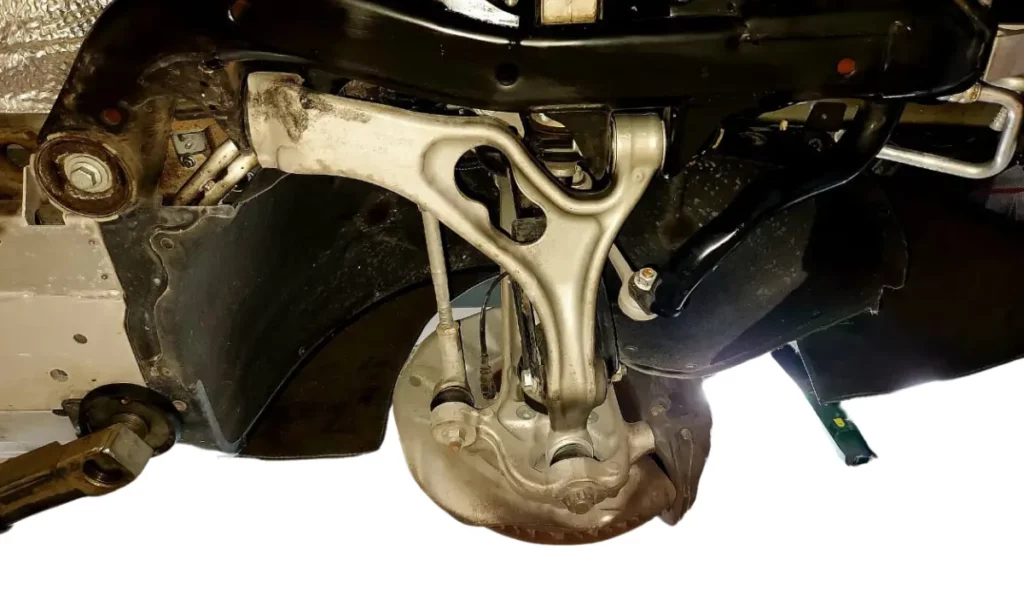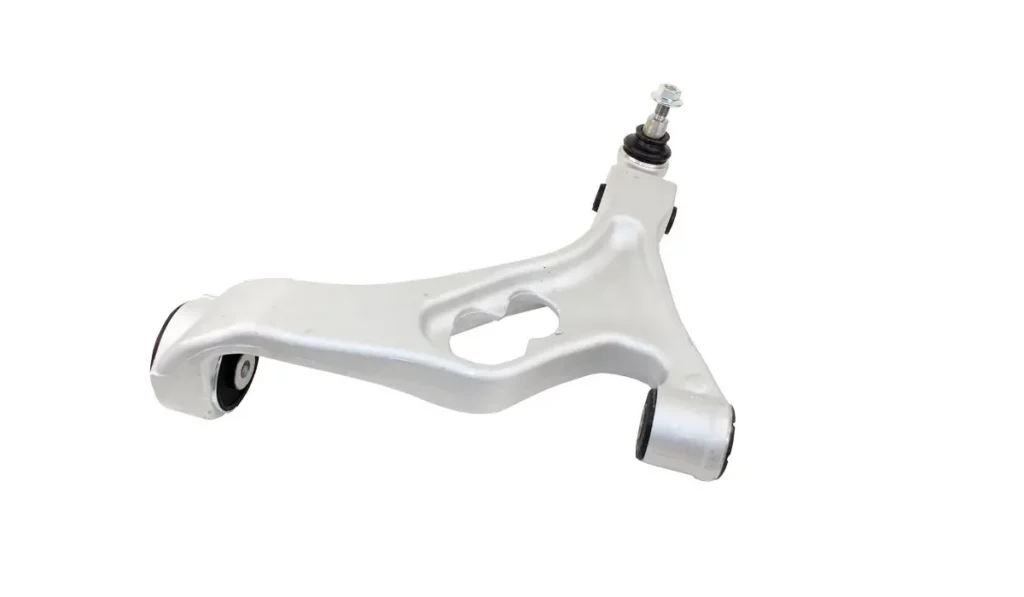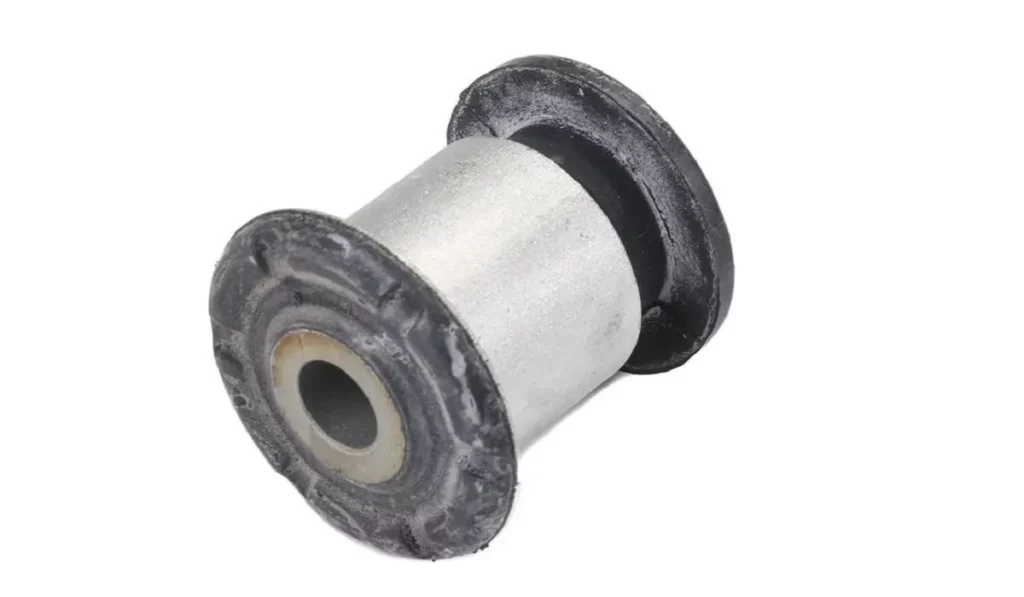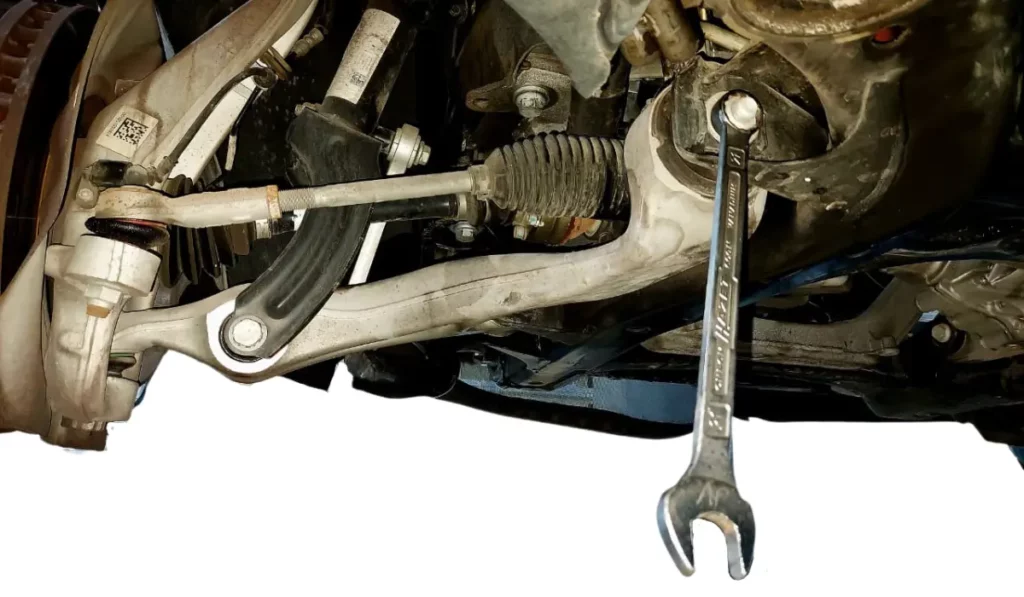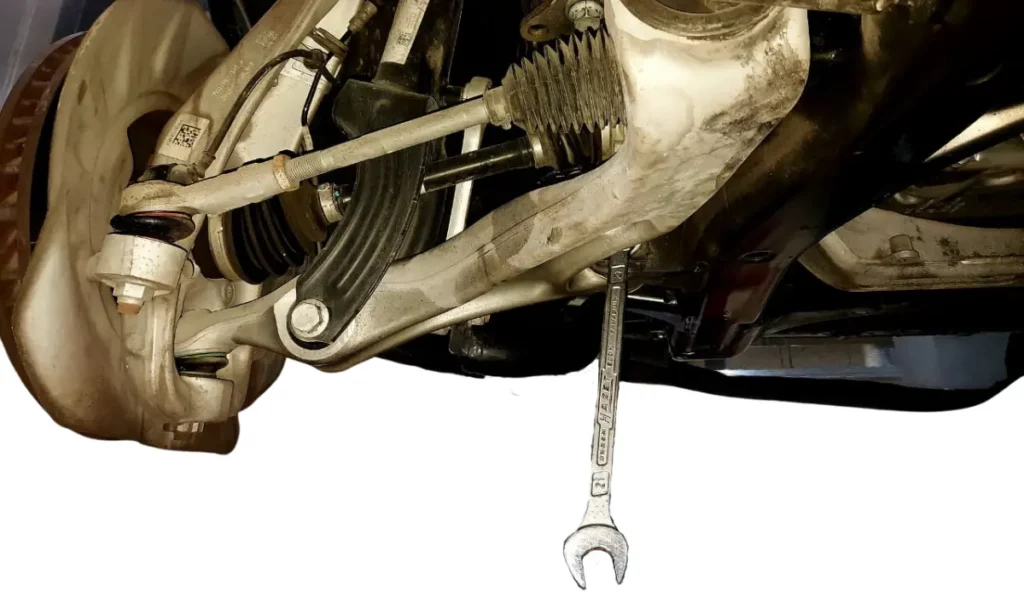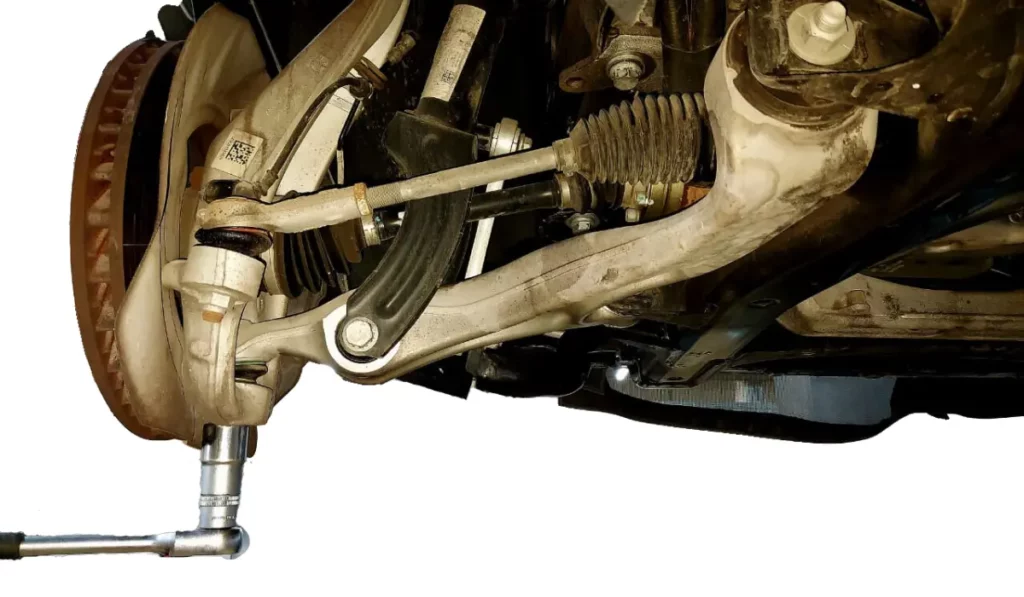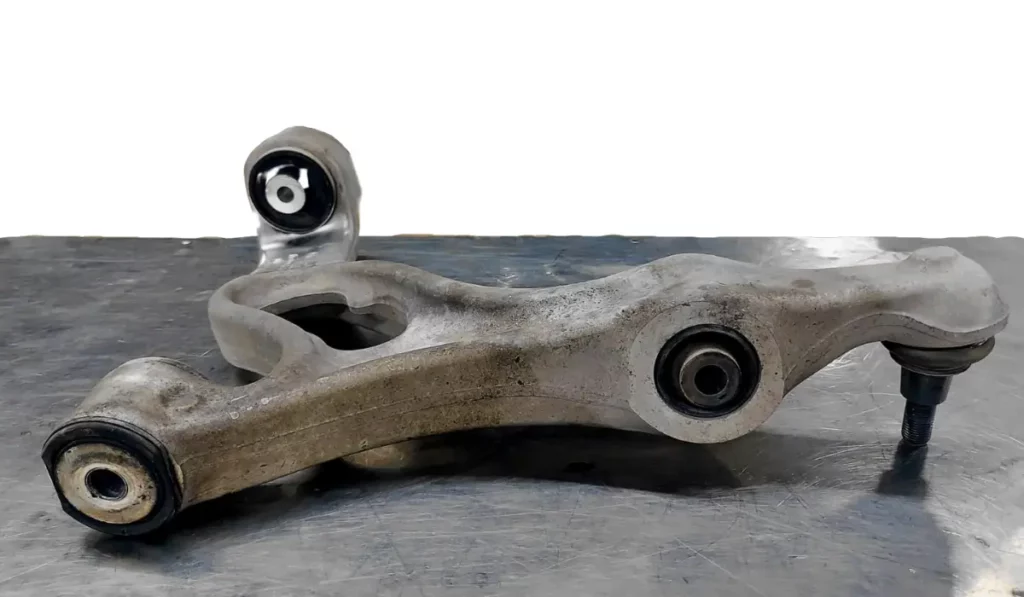Ah, the Porsche Cayenne 958. Sleek, powerful, and the ride gives a grin on your face. It’s definitely a car most of us enthusiasts want to have an intimate relationship with. But like any passionate love affair, it’s not without its twist and drama. Some of you might have heard a subtle knocking noise while driving over rough roads and speed bumps. It’s not just any noise, but a telltale sign of the suspension’s cry for attention.
While ignoring this noise amid the purring engine and the exhilarating drive can be easy, addressing it brings us closer to comprehending the difficult mechanical and technical effort that goes into the car you drive. To better appreciate Porsche Cayenne’s precise handling, we look closer at the suspension’s lower control arms today.
Bounce and Comfort at Work in Porsche Cayenne 958
The Porsche Cayenne 958 isn’t just about good looks. It’s about the feeling that you are planted in the asphalt while maintaining utmost comfort. The suspension is the unsung hero here. Adapting seamlessly from urban streets to rugged terrains, it offers an almost poetic experience.
The reason for this exceptional handling? The combination of the right wheelset, lighter unsprung weight, hydraulic mounts, double-wishbone, and Multi-link suspension design on the front and rear axle. Oh, and there are some optional systems, too, like the Porsche Active Suspension Management (PASM), Porsche Dynamic Chassis Control (PDCC), and an Air Suspension System to add to the list!
Big kudos to those brainy Porsche folks in Weissach; they sprinkled some engineering magic to turn this beauty into a beast on curves. It’s like having a sports car vibe in an SUV body.
The Weakest Link in Suspension: Lower Control Arms
But no car is perfect, we all wish there were! Over time, even the best-engineered parts can wear out. Whether it’s a result of regular wear and tear or a spirited drive on a winding mountain road, the suspension components can sometimes give in.
A good example of this is the lower control arm. It is an assembly of 3 bushings and a ball joint that is connected to the lower part of the wheel hub carrier. First to give in are the bushings, particularly the hydraulic mount, held in by the castor-adjusting eccentric bolt. Now, this being a hydraulic mount when it is damaged, there will be a streak of a dark-colored fluid on the control arm and, sometimes, on the floor too.
The ball joint, however. It can be visually identified as damaged if the rubber boot is cracked. If it is, then there is no way that it can retain grease. Sooner or later, you will hear an annoying creaking sound while turning your steering wheel. Worst, it will affect your handling.
Knock, Knock. Who’s There?
And how does your trusty Cayenne 958 communicate this hiccup? A subtle knock can be heard from where the wheels are! This usually happens when passing speed bumps and rough roads. In some cases, it could also create a knocking noise while turning the steering wheel while driving slowly.
Now, if you didn’t notice this cry for help or just didn’t care about it at all, you are potentially risking yourself and your precious car! It can cause uneven and early tire wear and even a wobbly ride feel! You remember how the lower control arms were mounted, right? These bushings are essential to keep your wheel alignment values in check. So, let’s give them the love they deserve!
How to Fix: Porsche Cayenne 958 Suspension Noise?
Caught that knockin’ sound? Seen a sneaky leak? Or felt a bit of a shimmy shake? Let’s jump on it! Giving your ride the TLC it deserves means smoother cruising, and fewer surprise pit stops. Because let’s be real, isn’t cruising in style what the Porsche life is all about?
Now, before we dive deep under the chassis and start our garage jam session, let’s rally up our trusty tools. You’ve got to make sure we’ve got everything on deck for our car-care gig. Ready to roll?
- Hydraulic jack rated at least 2 ton
- Jack stand rated at least 2 ton
- Working gloves
- Safety goggles
- Mechanics creeper
- Wheel chock
- Inspection light
- Your trusty pry bar
- Marker — preferably paint marker
- Box and combination wrench set
- ½” drive ratchet and socket set
- Cordless impact driver ½” drive
- Ball-peen hammer
- Your trusty Ball joint puller
- Allen or Torx key wrench set
- VAG bushing removal tool
Alright, squad! With our prep game strong, it’s go-time! Time to rock those sleeves up and dive into the action. But hey, remember our golden rule: SAFETY FIRST! Make sure you’re working in a safe zone and rocking that protective gear. Oh, and give a shoutout to the peeps around — let them know you’re in the zone. The last thing we need is a surprise guest who may get hurt in our workspace, right? But knowing you cool dudes, you’ve got this down pat. So, without further ado, let’s get our hands dirty!
Lifting your Porsche Cayenne 958
First things first! If your ride boasts an air suspension system, here’s a pro tip: Flip it to service mode. Start your engine, then push that leveling system toggle switch forward. Hang tight until your dash flashes a “leveling system disabled” alert. Double-check? The switch’s lowest and highest indicator lights should flash in red together. Got the standard steel suspension setup? You can totally skip the previous step and move on.
No cordless impact wrench in your toolkit? You should give those wheel bolts a lil’ half-twist now. Trust me; solo acts can be tricky later. Lucky enough to have that wrench? Save the twist for the next step. Oh, and heads up: if you’re looking for the wheel guide or wheel lock security key, peek in your rear trunk beside the spare tire.
Got your hydraulic jack? Great! Look for the jacking point hanging out near the running board. Whether it’s dressed in rubber or aluminum, it’s got a rectangular look. Before lifting your car, ensure it’s in park and drop a wheel chock behind those rear tires. Safety first, right? Now, lift your ride to your comfy working height. Slide in that jack stands right under the rear corners of the subframe. Make sure it’s steady as a rock, and you’re all set to rock ‘n’ roll!
Removing wheels
With the car soaring high, it’s time to free those wheels. Go ahead and give them a good loosen and whip them off. Oh, and don’t shy away from using that wheel guide — it’s there to give you a hand, especially when those wheels pack some serious weight. Now, for my pals with those fancy ceramic brake discs (PCCB), be extra gentle. We don’t want any chips or dings. Those babies can burn a hole in your pocket. So, handle it with care, and let’s keep rolling.
Inspection first!
Alright, let’s roll up our sleeves and get our hands dirty! Now that those wheels are out, we’re going on a little adventure under the car. Grab that mechanic’s creeper, and let’s scoot under your Porsche Cayenne 958.
Light it up down here with your trusty inspection light, and let’s get poking around with a pry bar. Give those lower control arm bushings a gentle nudge – we’re just checking in to see how they’re holding up. It’s like giving your car a quick health check-up!
But hey, since we’re already playing detective, let’s not stop there. Next on the list? The upper control arms. These guys are like the shoulders of your car; they carry a lot of weight. Take a good look and make sure they’re still standing strong.
Shock absorbers, you’re up next! These unsung heroes take all the bumps and bounce on the road to keep our ride smooth. Make sure they’re not tired out and not leaking oil.
Now, let’s wiggle our way over to the stabilizer bushings and links. These buddies work together to keep our car steady and balanced. We definitely want them in top-notch condition, so give them a good once-over.
Don’t forget about the tie-rod end! This little guy has a big job in helping steer the car. We want to make sure it’s not slacking off on the job, so check that it’s secure and ready for action.
And while we’re down here, we might as well give a quick glance to the engine for any sneaky leaks. It’s not every day you get to see your car from this angle, so let’s make the most of it!
Removing the Porsche Cayenne 958’s lower control arms
Alright, let’s get down to business! First things first. If those lower control arm bushings look like they’ve seen better days and need a switcheroo, we will need to get them out of there. But wait up! Before we start wrestling with those parts, grab a marker and give a lil’ mark to those eccentric bolts. Trust me; you’ll want to know how they were angled when it’s time to reunite them with your ride.
Removing camber and caster eccentric nuts
Got them marked? Sweet. Now, flex those muscles, and using your combination and box wrenches, ease up on the nuts of the eccentric and lower strut bolts.
Once they’ve loosened up, pull those bolts out. I won’t lie; it’s kinda like trying to convince a sleepy cat off your lap — it might take a minute, but stay chill. If they play hard to get, your pry bar and hammer are ready for action. But remember, it’s supposed to be just love taps, not a “blow to your gut” tap.
Loosen and disengage the lower control arm ball joint
Next, head over to the ball joint bolt under the wheel hub. Little mechanic wisdom: don’t yank it out completely. Just unscrew until the nut and thread are flush with each other. Why, you ask? To make sure that those delicate threads stay smooth and unharmed.
Now, the ball joint puller is up! Slide it in and gently pull that joint away from its cozy wheel hub home. For my friends who might be tempted to go Thor-style with a hammer, we are professionals, at least we try to, and we don’t want our car parts unnecessarily dinged up.
Okay, final stretch! Let’s shimmy that lower control arm out of there with all the bolts free and the ball joint living its best solo life. It’s a bit like solving a Rubik’s cube, but the magic move is to tug the lower control arm down while nudging the wheel hub carrier out. And voila! Your lower control arm is free to roam. Give yourself a pat on the back, car whisperer!
Replacing damaged parts
It’s time for the grand finale! Now that you’ve done the hard yards, we’ve got options for getting that Cayenne 958 purring again. So let’s break it down:
Option Uno: Swap out the whole enchilada! Replace that lower control arm as a single piece. For the folks who like their fixes quick and straightforward. And the sweet deal? You’re only dropping less than $200 bucks to spruce up both front sides. I’d say it’s a no-brainer for anyone looking to solve the problem and get back on the road ASAP.
Option Dos: Feeling a bit adventurous? You can just replace the bushings. But, and this is a biggie, you’ll need a special tool that will run you about $600 smackers. Then, throw in another $50 for the parts. This one’s more for the budding mechanics setting up shop or the DIY junkies who love to get elbow-deep in their rides. However, if you’re deep into the garage game, you probably wouldn’t be here scrolling through, am I right?
Oh, and a heads-up: If that ball joint’s on its last leg, you can’t swap it out solo. It’s all or nothing. So, if it looks a little worse for wear, you might want to consider a full replacement.
So there you have it! The choice is yours. Whether you’re all about the quick fix or keen to flex those mechanic muscles, your Cayenne 958 will thank you.
Rewind: Installing it Back Properly
Now that the defective part has been replaced. There are just some steps that you need to pay attention to when installing everything back up. First, remember the marks that we did before removal? We have to match it again so that it is installed in the same position. This is because those bolts are the adjustment for your car’s wheel alignment. You don’t want your ride to pull left and right after this repair, do you? As a general reminder, replacing all removed bolts and nuts is a good habit. Spend those bucks on good things!
If you have a budget and every suspension bushing is fixed, align your car’s wheels professionally. This ensures that the values are correct and those wheels will not be prematurely worn.
Fix Your Porsche Cayenne 958’s Lower Control Arms for a Quality Ride
Alright! That wraps up our deep dive into the Cayenne 958’s lower control arms. But hey, before you go, a quick word to the wise: Quality parts matter. At eEuroparts.com, we’re not just about parts; we’re about the right parts! Quality, durability, and performance — that’s our promise. So next time your ride’s giving you signs, or you’re itching for an upgrade, swing by eEuroparts.com. Because when it comes to your car, only the best will do. Keep riding smooth, and see you on the road!


